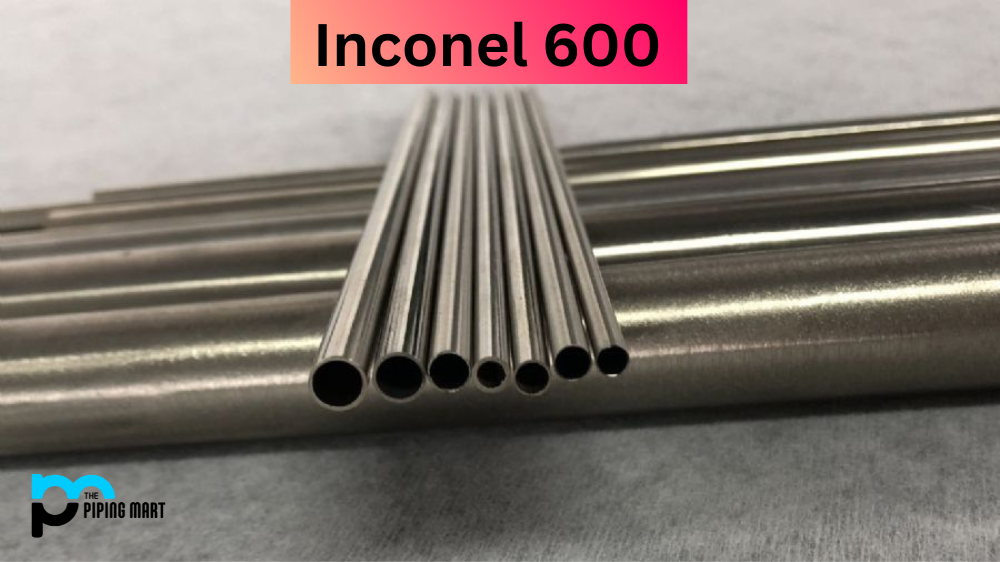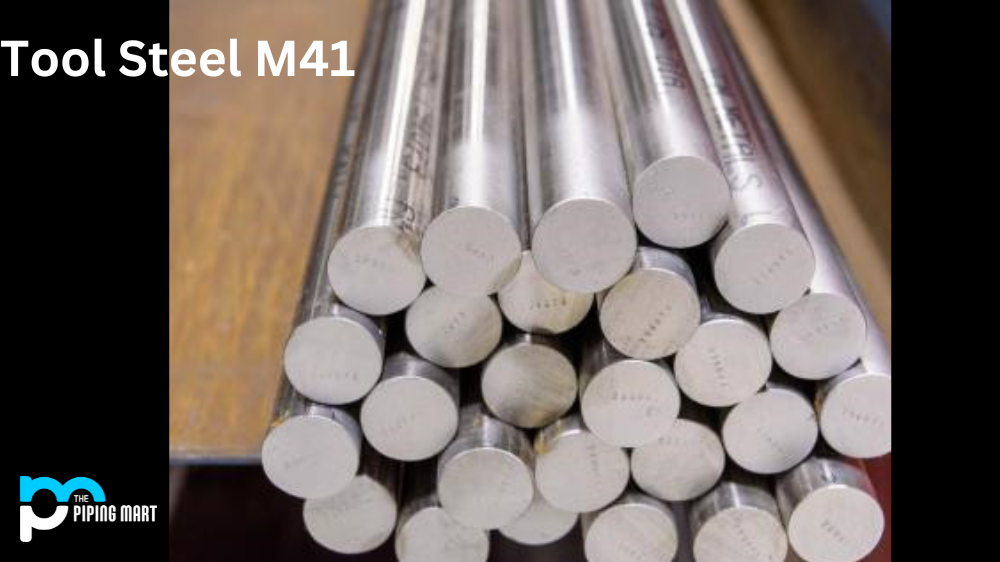Inconel 600 is an alloy made of Nickel, Chromium, and Iron. It is a nickel-chromium-iron superalloy known for its corrosion resistance, heat resistance, and high strength at elevated temperatures. N06600 is often used in applications with temperatures reaching up to 2000°F (1093°C). This guide will explore the composition, properties, welding techniques, uses, and machining of 600 Inconel.
What is Inconel 600?
Inconel 600 is a nickel-chromium alloy used in high-temperature applications. It stands up to oxidation and corrosion, making it ideal for chemical components that resist corrosion or heat. Inconel 600 is also useful in high-temperature fastening and structural components due to its strength at elevated temperatures. Its ability to perform under extremes of both temperature and stress makes it popular in various industries, including aerospace, automotive engineering, energy production, marine engineering and petrochemical plants. Furthermore, its weldability makes it an excellent choice for projects requiring worked metals. In short, Inconel Alloy 600 is the perfect metal for projects needing strength and resistance under extreme conditions.
What Forms is Inconel 600 Available at Piping Mart?
- Inconel 600 Flanges
- Inconel 600 Forged Fittings
- Inconel 600 Fasteners
- Inconel 600 Pipe Fittings
- Inconel 600 Nuts
- Inconel 600 Bolts
- Inconel 600 Plates
- Inconel 600 Electrodes
- Inconel 600 Valves
- Inconel 600 Tubing
Inconel 600 Chemical Composition
600 Inconel has a chemical composition of Ni 72%, Cr 15.5%, Fe 8%, Mn 1%, Si 0.5%, and C 0.15%. This combination gives it superior corrosion resistance when exposed to both oxidizing and reducing environments. It also makes it ideal for use in many industries, such as aerospace and chemical processing, because of its high strength at temperatures up to 2000°F (1093°C).
| Element | Min | Max |
| Carbon | — | 0.10 |
| Nickel | 72.0 min | |
| Chromium | 14.0 | 17.0 |
| Iron | 6.00 | 10.00 |
| Silicon | — | 0.50 |
| Manganese | — | 1.00 |
| Sulfur | — | 0.015 |
| Copper | — | 0.50 |
Inconel 600 Chemical Properties
Inconel N06600 is an incredibly versatile alloy that has become popular in various industries due to its impressive chemical properties. This nickel-chromium-based superalloy exhibits excellent resistance, even at extremely high temperatures, and has superior corrosion resistance due to the presence of niobium. Alloy 600 is used for components found in energy production plants, aircraft turbine blades and exhausts, nuclear power plants, chemical processing operations, and much more. With such a wide range of applications, it’s no wonder that Inconel 600’s excellent chemical properties have made it the preferred metal material in many industries.
Inconel UNS N06600 Physical Properties
In terms of physical properties, Inconel 600 has a density of 8.4g/cm3 with an electrical resistivity at 20°C (68°F) range from 1.09 to 1.12 μΩ·m and thermal conductivity range from 21 W/(m·K) to 28 W/(m·K). These properties make it well suited for applications requiring superior corrosion resistance in challenging environments, such as heat exchangers and condensers in power plants or furnace components in petrochemical operations.
| Physical Properties | °F | British Units | °C | Metric Units |
| Density | Room | 0.304 lb./cubic in. | Room | 8.43g/cubic cm |
| Electrical Resistivity |
70 200 400 600 800 |
40.6 microhm-in. 40.9 41.5 42.2 43.0 |
21 93 204 316 427 |
1.03 microhm-m 1.04 1.05 1.07 1.09 |
| Mean Coefficient of Thermal Expansion |
70-200 70-400 70-600 70-800 |
7.4 microinches/in.-°F 7.7 7.9 8.1 |
21-93 21-204 21-316 21-427 |
13.3 x 10(-6)m/m·K 13.9 14.2 14.6 |
| Thermal Conductivity |
70 200 400 600 800 |
103 Btn-in./ft².-hr.-°F 109 121 133 145 |
21 93 204 316 427 |
14.8 W/m·K 15.7 17.4 19.2 20.9 |
| Modulus of Elasticity |
Room | 30.0 x 10(6) psi | Room | 207 GPa |
Inconel 600 Mechanical Properties
Inconel 600 is an alloy of nickel, chromium, and iron with mechanical properties that make it incredibly valuable in extreme temperatures. It is commonly used in energy applications, such as turbine blades, as its strength retains integrity even when exposed to temperatures up to 2,000°F. In addition to its superior heat resistance, 600 Alloy Inconel offers good formability, weldability, and excellent corrosion resistance. This makes it an ideal material for areas where both hotness and moisture are inevitable. As a result of its electrical conductivity and oxidation resistance, it’s also a popular choice for electronic components like connectors and lead wires. Altogether, Inconel 600 is a superior material with wide-ranging mechanical properties needed for successful high-temperature production processes.
| Density | 8.47 g/cm3 |
| Melting Point | 1413 °C (2580 °F) |
| Tensile Strength | Psi – 95,000 , MPa – 655 |
| Yield Strength (0.2%Offset) | Psi – 45,000 , MPa – 310 |
| Elongation | 40 % |
Inconel 600 Thermal Properties
Inconel 600 is a nickel-chromium alloy noted for its excellent thermal properties. It offers high strength, toughness, and good stress corrosion cracking resistance even under extreme temperatures. These traits make it an ideal material for many applications with consistently changing thermal environments, such as in power generation, defence-related systems and aerospace components. Its remarkable properties provide users with added security because the metal will not soften or harden from temperature changes nor be brittle when exposed to cold temperatures. 600 Alloy enables engineers to develop new designs in challenging high-temperature and corrosive environments.
Inconel 600 Equivalent
- UNS N06600
- AMS 5540
- ASTM B 168
- ASME SB 168
- 10204
- EN 2.4816
Inconel 600 Specifications
| Form | Standard |
| Metal Type | UNS N06600 |
| Inconel 600 Bar | ASTM B166 AMS 5665 Din 17752 |
| Inconel 600 Wire | |
| Inconel 600 Sheet | ASTM B168 AMS 5540 Din 17750 |
| Inconel 600 Plate | ASTM B168 AMS 5540 Din 17750 |
| Inconel 600 Tube | ASTM B167 |
| Inconel 600 Pipe | ASTM B167 |
| Inconel 600 Fitting | ASTM B366 |
| Inconel 600 Forging | ASTM B564 Din 17754 |
| Inconel 600 Weld Wire | FM 82/ ERNiCr-3 |
| Inconel 600 Weld Electrode | FM 182/ ENiCrFe-3 |
| Din | 2.4816 |
Inconel Alloy 600 Uses
Inconel 600 is a metal alloy that is both corrosion and heat-resistant, making it an ideal material for many engineering applications. It has seen increasing demand over the years, as its versatility allows it to fill various speciality roles. Regarding commercial uses, Inconel 600 is mainly used in the chemical processing industry due to its resistance to highly corrosive acids. Additionally, its ability to withstand high temperatures makes it an excellent choice for furnace components in high-heat settings. It also finds heavy use in the aerospace industry, where its low creep rate means a longer life span and lower risks of catastrophic failure under extreme stress. With its vast capabilities, UNS N06600 sets a new standard for metal alloys in engineering applications.
Inconel 600 Welding
When welding Inconel 600, it is important to use the correct technique due to its high Nickel content, making it susceptible to cracking improperly welded. The best way to weld this alloy is by using the Gas Tungsten Arc Welding (GTAW) process with either pure Argon gas or a blend of Helium and Argon gas, shielding the arc from oxidation while welding at lower current levels than other alloys require. Furthermore, preheat the material before welding so that any hydrogen present can be removed before welding, which will help reduce cracking during cooling after welding. Additionally, avoid excessive interpass temperatures since these can also lead to cracking during cooling after welding has been completed. Finally, use proper post-weld heat treatment processes such as solution annealing or stress relieving if necessary, depending on the application requirements for dimensional stability or improved fatigue properties. post-welding operations have been completed on the material being welded with Inconel 600 Alloy.
Inconel 600 Alloy Corrosion Resistance
Inconel N06600 is one of the strongest nickel-chromium alloys, making it an ideal choice for applications requiring high corrosion resistance. It can withstand the harshest corrosive environments, from acidic and alkaline solutions to extreme heat and pressure. This makes it invaluable in industries where exposure to aggressive chemicals is common, such as oil and gas operations. In addition to its superior corrosion resistance, Inconel Alloy 600 is incredibly durable and highly resistant to oxidation and thermal fatigue, meaning it can provide plenty of life expectancy even when exposed to intense working conditions.
Inconel 600 Heat Resistance
Inconel 600 Material is a type of metal alloy with excellent heat resistance. This makes it ideal for extremely high-temperature applications, such as parts of jet aircraft engines and chemical processing equipment. The remarkable heat resistance of Inconel 600 is due to its chemical composition–it has around 72% nickel, 14-17% chromium, and small amounts of iron, manganese, carbon, and other trace elements. This combination provides an alloy that can be used in applications requiring temperatures up to 2200°F (1200°C)—while also exhibiting excellent corrosion resistance against warming media. The many benefits associated with Inconel 600 make it the alloy of choice for many industries today.
Inconel 600 Heat Treatment
Heat treatment of Inconel 600 alloy is an important part of the fabrication process. It enhances the alloy’s corrosion resistance, ductility, and creep strength. The process involves heating small parts to 1850°F and holding them at that temperature for the required time before cooling or quenching. This procedure increases the part’s hardness and improves its fatigue strength. The heat treatment is often accompanied by post-treatments like annealing, age hardening, or straightening to provide optimal performance. Ultimately, Inconel 600’s heat treatment is integral in improving its usability in high-temperature service applications.
Inconel 600 Machinability
Ally 600 is a challenging alloy to machine, but its qualities make it worthwhile. With high corrosion and heat resistance properties, Inconel 600 is highly sought after in marine, nuclear, and chemical processing applications. To accommodate these tough provisions, machining processes must use specialized tools and methods yet still yield quality results. Multiple cold-working processes such as rolling, drawing, pressing, and bending enable Inconel 600 to be machined into desired shapes quickly and efficiently with minimal scrap material. Machining this alloy also requires diligent attention to mechanics points such as feeding rate and toolroom situation to ensure desired outcomes. Despite some of the difficulty posed by the higher levels of hardness, Inconel 600 remains a popular choice for machinists due to its unique varieties of tempering stability.
Conclusion
In conclusion, there are many different uses for Inconel 600 Alloy due to its unique combination of physical and chemical properties, including superior corrosion resistance in challenging environments such as heat exchangers and condensers in power plants or furnace components in petrochemical operations, as well as its ability maintain its strength at high temperatures up to 2000°F (1093°C). Furthermore, special attention must be paid when welding this alloy because improper techniques can lead to cracking while cooling after welding operations have been completed on the material being welded with Inconel 600 Alloy. With these tips under your belt, you should now better understand how to use this alloy properly!

Pipingmart is B2B portal specializes in industrial, metal and piping products. Also, share latest information and news related to products, materials and different types grades to help business dealing in this industry.




